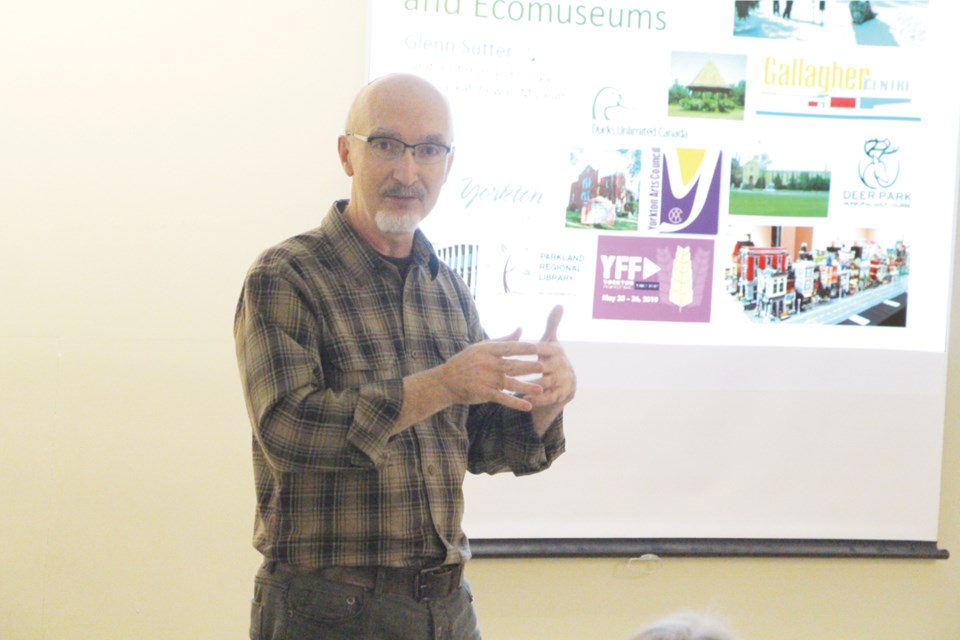What’s an ecomuseum? Glenn Sutter, curator of human ecology at the Royal Saskatchewan Museum has been explaining the idea of an ecomuseum to groups around the province, in the hopes of building the idea in Saskatchewan. He was in Yorkton to talk to the Yorkton chapter of the Saskatchewan Geneological Society about establishing an ecomuseum in the area.
In short, an ecomuseum is a museum without walls.
“It’s a really a set of committees that get set up by people and organizations that are interested in local heritage, whether that’s built heritage, living heritage or local stories,” explained Sutter.
The goal of establishing an ecomuseum is to help preserve local heritage, but also get residents to engage with it more, and improve the quality of life of a community through heritage.
Safeguarding local heritage is traditional museum territory, but what does eco mean in this context? Sutter explains that it’s about the place where the museum is established.
“The eco side is the ecology of the people who live there. What is the local economy like? What is the local environment like? What is affecting that community? How can the residents respond in ways that honour the heritage, build on the heritage, and make the community sustainable over time?”
Examples of ecomuseums could include supporting artists in residence programs, getting school groups involved or advocacy for issues surrounding a region.
There are currently 4-5 active ecomuseums in the province, but this is a new development. Five years ago, there were none. Sutter said that part of the reason for the growth in ecomuseums is that many organizations, including the Royal Saskatchewan Museum, but also including other heritage groups in the province, are behind the idea.
“They see it as a way to make heritage relevant for a community.”
This is fresh in Saskatchewan, but this isn’t a new concept, and Sutter points to other continents as the source of the ecomuseum idea.
“It is new here, but not elsewhere, there are ecomuseums in Europe that have been operating for 30 years.”
This is something that small groups can easily establish in a community, and that’s part of the reason why the programs are becoming popular with smaller groups. It’s not a funding program, but Sutter describes it as a grassroots movement in the province. It doesn’t cost anything to set up and there is more support in the province for establishing one.
“We’re moving away from a dry, dusty museum image and really keeping heritage alive in a community.”
Keep track of Saskatchewan ecomuseums by searching Saskatchewan Ecomuseums on Facebook.


.JPG;w=120;h=80;mode=crop)

